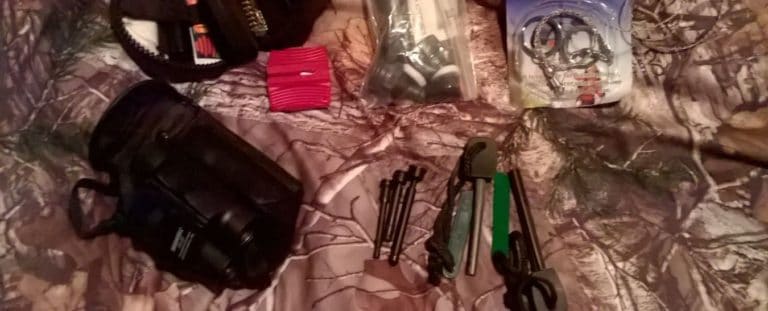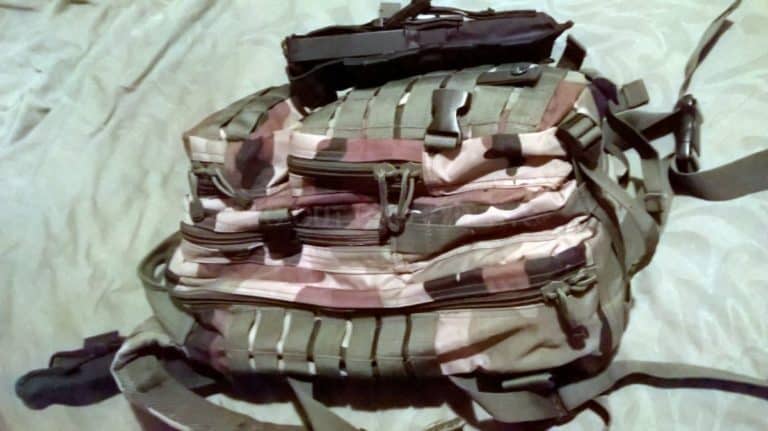Best Knives for your Bug-Out Bag
The most important item you can have with you in a survival situation is a knife. The fact is that recreating a strong, sharp blade with natural materials is very difficult. It requires the perfect materials and years of practice. Because of the importance of this tool, it is equally important to select the right knife for your bug out bag.
A good knife can help you build a shelter, cut firewood, start a fire, hunt, fish, trap, and defend yourself. However, an unreliable knife can snap and slice open your hand. It has taken me a great deal of time and experience to find the perfect knife for my bug out bag. In this article I will cover all the variables you need to consider when selecting your perfect blade.
Knife Size and Design
Finding a good balance with knife size can be difficult. You want to have a knife that is small and easy to control for detailed work like carving wood or cleaning small animals. However, you want a large knife for self-defense or for processing wood for a fire or shelter. You can go with a machete with a three foot blade or with a small hunting knife with a three inch blade. I find that something in the middle is the best option. I like a knife with about a 10 inch blade so it can function for all of these tasks.
As for the design of the knife, many people opt for a folding blade knife. I would never suggest a folding blade knife for your primary blade as the joint makes it less reliable. The blade is not as sturdy, and it could potentially close on your hand leaving you with a serious injury. A fixed blade knife is the way to go for your primary blade. In addition, you want to look for a full tang knife. These have a blade that extends all the way to the end of the handle. Partial tang knives are less expensive, but are not nearly as strong. The handle can break allowing the blade to separate from the handle. Partial tang knives are dangerous and much less reliable. Full tang is the way to go.

Ergonomics
One of the most important aspect of comfort with a knife is how it feels in your hand. Handles can be made out of dozens of different materials, but the material is not nearly as important as the shape and size of the handle. If it is too long the end will make it hard to wield, and if it is too short it will be hard to grip. You also want a shape that is easy to grasp and hold tight when thrusting or chopping with the blade.
Metal Type
When I first started purchasing knives for survival, I did not really consider the type of metal I selected. I had a smaller skinning knife that I was using for survival purposes and it seemed to do fine. Then came the fall, and I was able to bag three deer between archery season and gun season. I noticed while skinning and quartering the deer that I kept having to sharpen my knife over and over again. It was really irritating that the knife did not hold an edge well.
I decided to do some research and found that my knife was made from a steel that is fairly average in quality. I found some steel types that are made to hold an edge better. These steel types are harder to find and about three times the cost, but I bit the bullet and purchased a new knife. I can say that the difference has been huge. I was able to skin and butcher an entire deer without sharpening the blade once.

Here are some higher quality steel types to consider:
5160 STEEL – This is known as spring steel. The material is flexible which makes the blade durable and unlikely to break. It should be hardened for high performance.
13C26 SANDVIK – This steel provides superior edge retention and hardness. The downside is that it can be hard to sharpen. It should be hardened as well.
420HC STEEL – This steel is a common middle of the road option. It has the wear resistance of high carbon alloys, but provides the corrosion resistance of chromium stainless steels. This blade has an average durability, but will not rust and is easy to re-sharpen.
S30V STEEL – This is the top of the line for blade steels, and it is made in America. S30V contains carbon as well as Chromium, Molybdenum and Vanadium. The blade gives you top notch edge retention, durability, and corrosion resistance. It is a bit hard to re-sharpen, but this is a blade that will last a lifetime.
154CM STEEL – This steel is solid for edge retention, has good corrosion resistance, and is ideal for those heavy jobs where other blades might break.
Blade Shapes
The shape of the blade that you choose will greatly affect its functionality. Some blade shapes are better for chopping, while others are better for detailed work. Here are some designs that may be ideal for your bug out bag.
Machete – The machete is traditionally used in jungle areas to cut a path through thick brush. The blade is typically between two and three feet long and between two and three inches thick. It has a full tang and a wooden handle with the blade having a curved, stocky end. Machetes are ideal for chopping and slashing anything up to about three inches thick. Most people have a hard time with detailed work because of the size of the blade. They are also long enough that they often will not fit in a smaller pack.
Kukuri – This blade originated in Nepal and was the knife of choice for the Nepalese army. It has a long, thick blade similar to a small machete but takes a steep angle towards the sharpened side about half way up the blade. This gives it a unique hook that is great for hacking and chopping brush, but makes it a little tough for working on smaller projects. The kukuri has a full tang and a wooden handle. The blade is normally one to two feet long and a few inches thick. It is a favorite of survivalists.

Billhook – This is one funky blade. Billhooks are very hard to find, and often you have to have one made by a blacksmith. For those that know about them, they know that billhooks are ideal homesteading tools. The billhook has a blade about three inches wide and just over a foot long. It comes to a point curving towards the sharpened edge. This creates a hook at the end. There is also a rectangular section jutting out from the spine about three inches wide. The edge is sharpened for a chopping. This tool is great for limbing poles with the hook and chopping poles with the back side. However, it is horrible for detail work and the irregular shape makes it hard to stuff in a pack.
Camp Knife/Chopper – This blade is also hard to find as the metal is thick and often must be hand crafted. The blade is a full tang drop point and normally between eight and twelve inches long. This makes it ideal for chopping, batoning, and finer work. The thickness of the blade makes it heavy and durable for the toughest job. It is small enough to fit in your pack or on your belt. This is another survivalist favorite.
Skinner with Gut Hook – This blade is ideal for the hunter or fisherman. It has a thick, rounded blade that is about three inches long with a gut hook on the spine. The blade is full tang and the handle is wooden. The wide, rounded blade is ideal for skinning animals and the gut hook is great for opening up the body cavity and removing the internal organs. It is great for small work, but not great for chopping or batoning wood.
And the Winner?
All of these knives could be a good fit for your bug out bag. The choice of a blade is very personal. Different blades work better for different people. However, I find the chopper to be the best bet for me. It walks the line between an oversized blade and an undersized blade. It is great for every task that survival might ask of it. This is the blade that I choose to keep in my bug out bag, and I feel that it fits the bill for most people. Hopefully this guide has given you the comparison you need to choose the best option for your bag as well.






I’m a camper at heart. I love the outdoors and getting back to nature. Having the ‘right’ equipment makes the experience so much easier however, I read stacks of articles and wade through mountains of sites advertising essential ‘survival gear.’ Its been said before and there is truth in the statements that ‘knowledge is more important than gear’ and ‘having the right survival attitude and approach (adaptability) to difficulties is key to surviving.’ No-one can dispute these statements. But how long can an individual survive, no matter how well stocked? Individually a person is responsible for every task – wood gathering, foraging for wild edibles, cooking, shelter building and maintenance, fishing hunting and foraging and, worst case scenario, self defence or medical requirements?
Sure have all the gear. Bone up on all the skills, learn all you can BUT seek company within a survivalist community. We are not solitary creatures – ‘no man is an island.’
A squiz at the survival show ‘Alone’ will soon demonstrate these survivalists eventually began the breakdown of their resolve by missing family and loved ones. Perhaps their experience is something every survivalist can learn from.